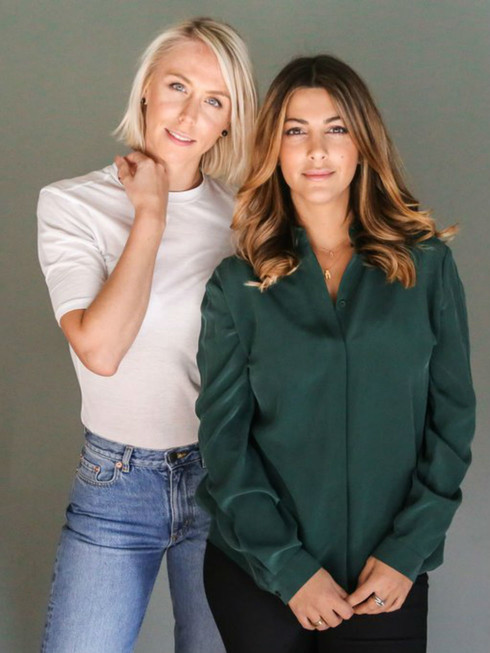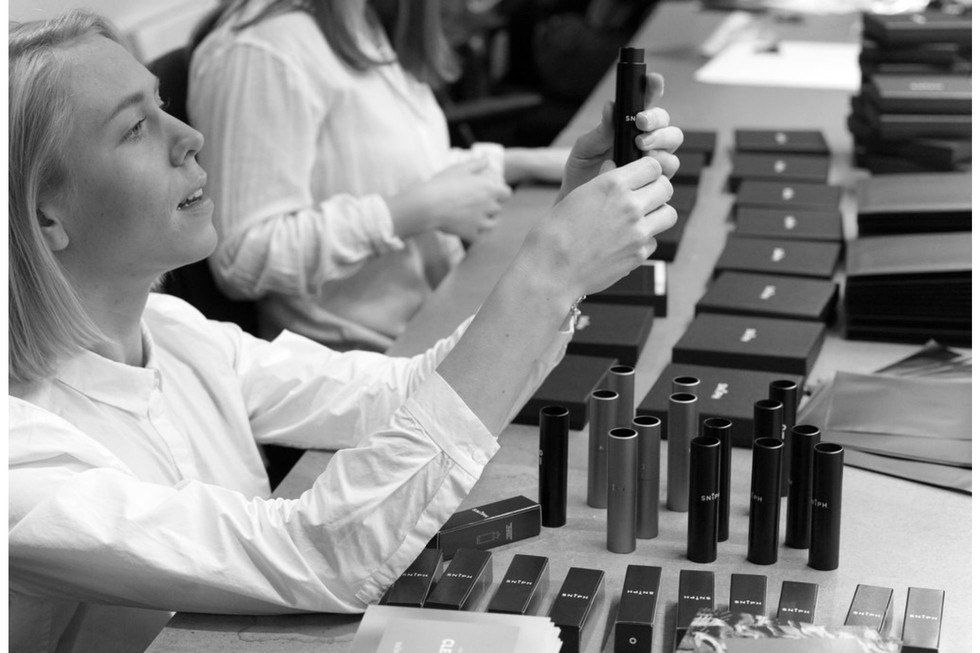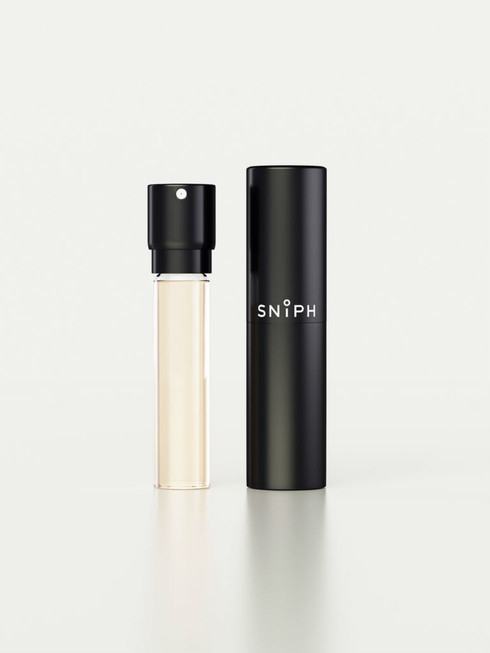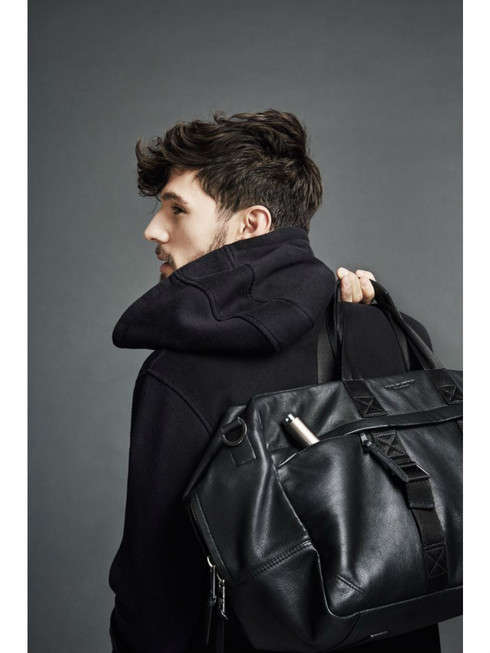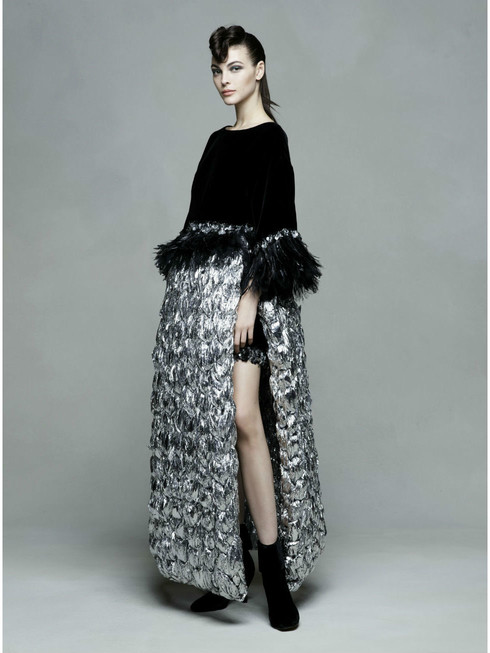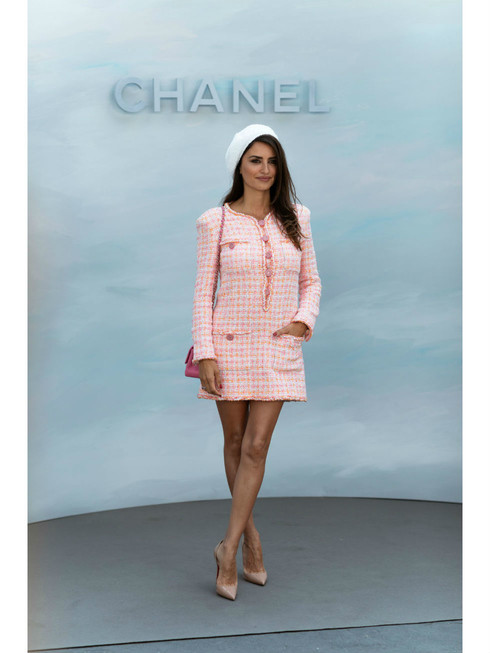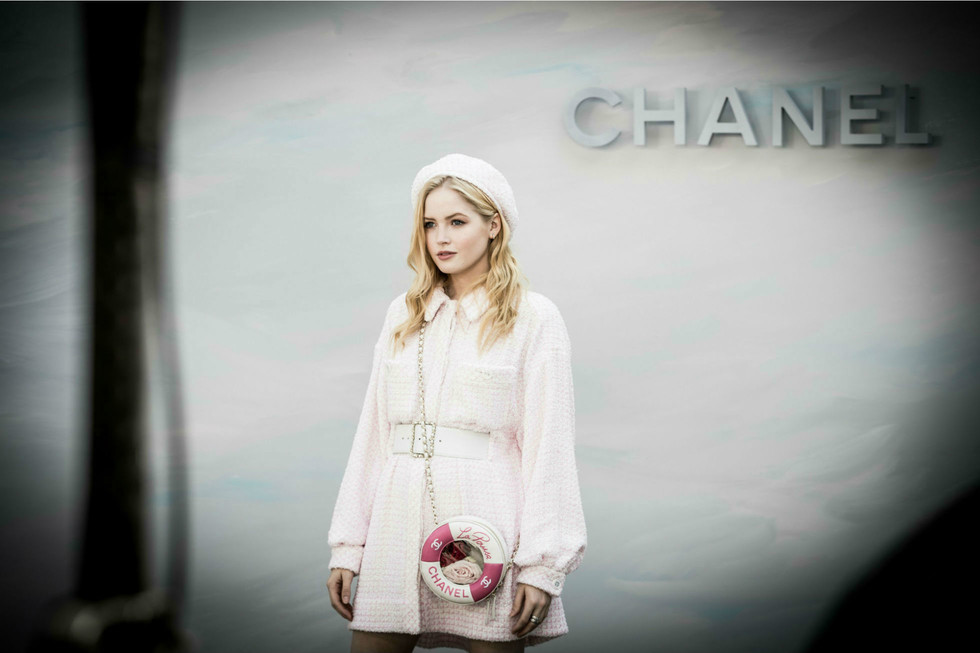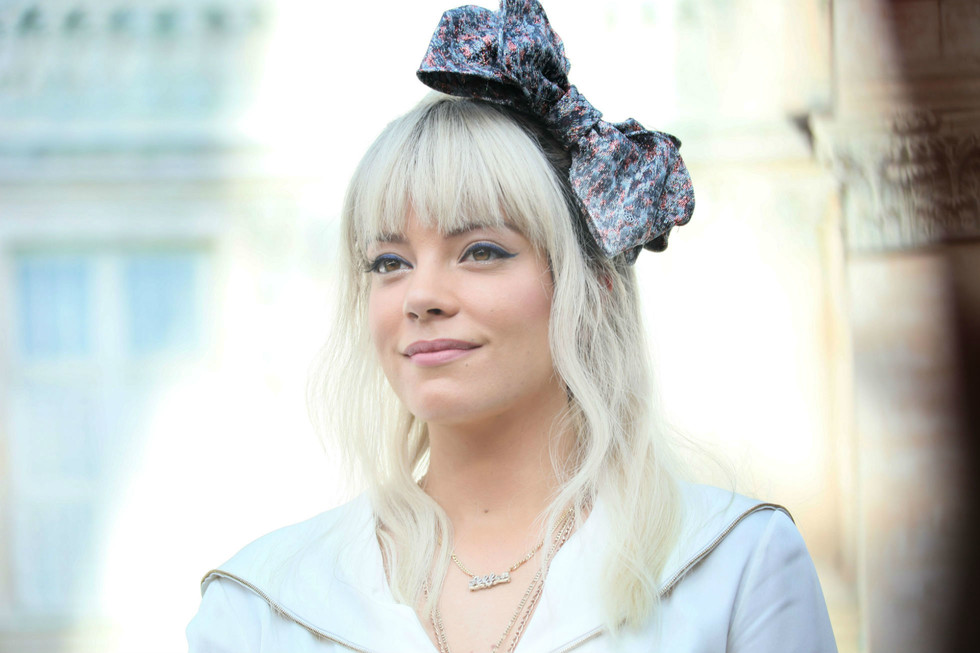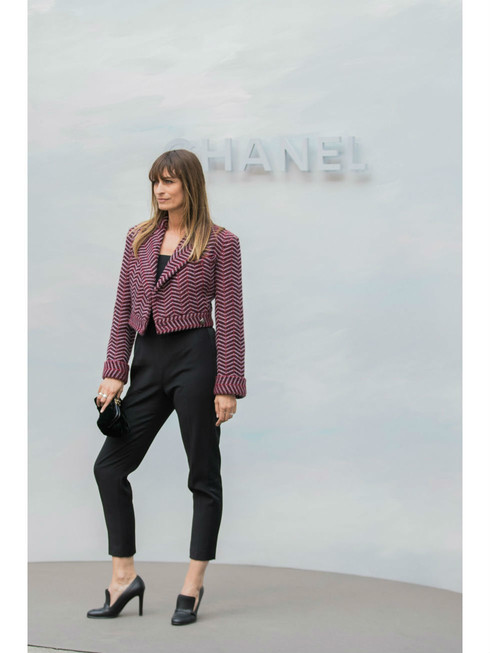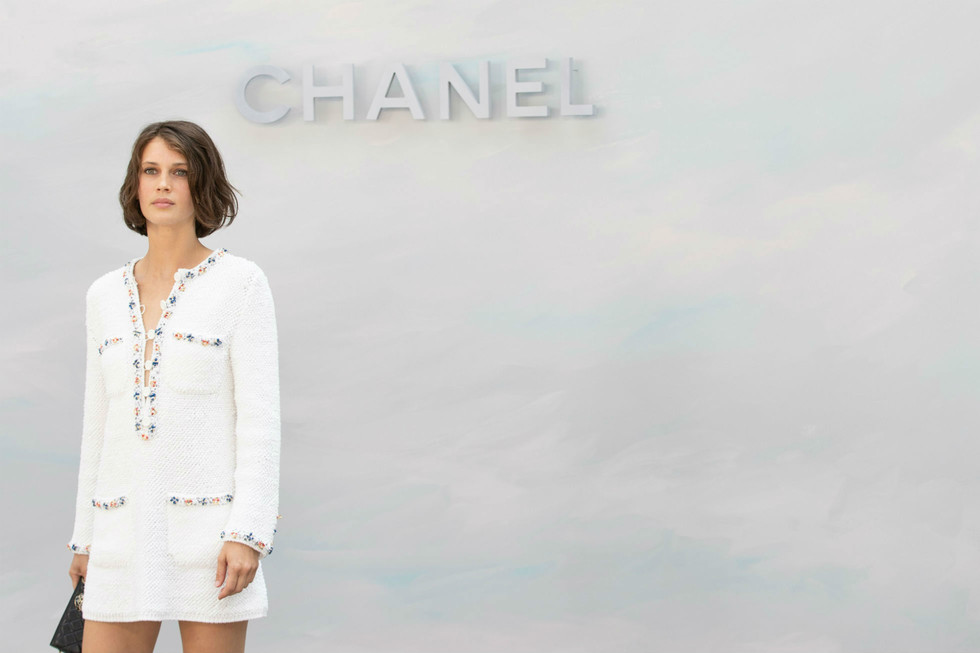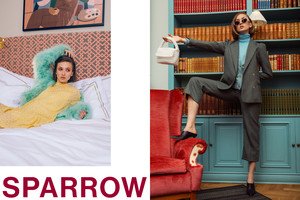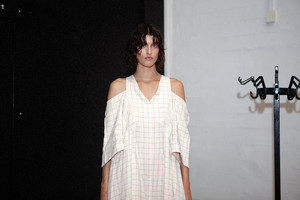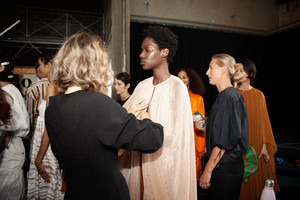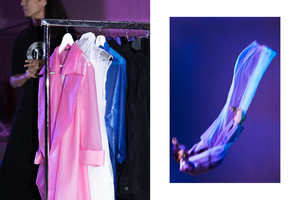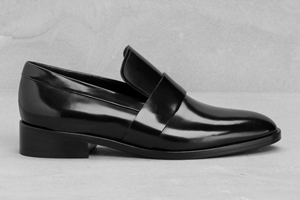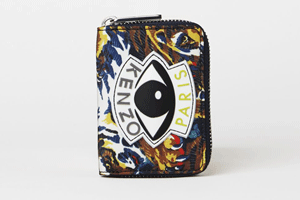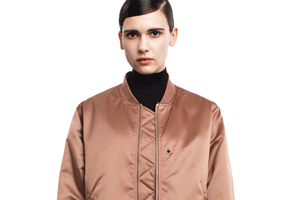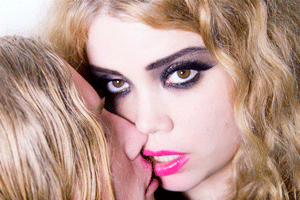SNIPH – THE QUINTESSENCE OF YOUR PERSONAL PERFUME MATCHMAKING
Written by Ksenia RundinIn the heart of Stockholm's heritage neighbourhood, Östermalm sits the young and bold fragrance service brand, Sniph who has dropped its entrepreneurial anchor on the fragrance scene. Sniph’s courageous and resolute innovators Lisa Kjellqvist and Tara Derakshan, have turned consumers’ perception of the perfume world upside down, creating their own digital rules based on an intellectual approach and passionate curiosity. The word ‘perfume’ comes from the Latin pro fumum, ‘through smoke’, and was originally reserved for the Gods. Today you can turn into your own connoisseur in your personally and uniquely tailored fragrance wardrobe. By choosing Sniph, you also become a member of a community, where you both develop you scent taste and build up your personal exclusive knowledge of fragrances, navigated by two tactful and sharp consultants.
Essentially, the brand is a fragrance discovery service, assisting its customers to choose a suitable scent to wear. Sniph’s vision is to bring magnificent fragrances to peoples’ lives and help them to find a personal exploration into their own unique fragrances. When it concerns clothes, there are a few established concepts how to adapt your wardrobe to your lifestyle and to create a mood. Meanwhile, the expression “perfume wardrobe” sounds unfamiliar to the majority of us. Accordingly, Tara and Lisa want to simplify the whole process and help their customers find a wide range of incredible fragrances, which they otherwise would probably not have been able to discover on their own.
The service costs SEK 159 (15€) per month, which includes an 8 mL perfume that is delivered in a sleek black case, which is easy to carry around in your handbag. One month is a time period considered reasonable for a person to discover whether they like a particular fragrance or not. Consequently, one needs to spend a bit more time with a fragrance than just to try it once in a store or as a tiny take home sample, before one can make up their mind. Lisa and Tara have chosen an optimal way to create suitable preconditions for making a valuable choice, at the same time liberating their customer from the time-consuming and painstaking decision making process. The fascination with fragrance is located in our senses, which are connected to the memory and feelings. Sniph’s aim is to create an experience connected to positive emotions whereby making their customers happier. They democratize fragrance as a service, creating a prefect matchmaking for the customers, whom are both men and women, constituting approximately 30/70.
Do you think fashion of fragrance exists?
Tara: Niche perfumes is a hot issue today. That could be considered fashion, where distinction – when you do not smell like anyone else – is the key.
Lisa: Due to their special nature and function, fashion magazines such as Elle and Harper’s BAZAAR through their editors have to talk trends to their readers. It conceives a certain constructed perfume trend responding the readers’ consumer needs. At the end of the day it is about what you as a customer appreciate.
Paris has always been considered as the capital of fashion. What is the capital of fragrance?
Lisa: It is also definitely Paris. However, some people have historical and cultural connections to Grasse as a capital of perfume. Paris is where all the perfume business activities are taking place today.
How do you stay update with latest fragrance trends? Are there any trend reports? Do you spot your own trends?
Lisa: Fragrance trends are not that fast as, for example, fashion trends. There are no clear tendencies such as striped or spotted. It is about reading a lot, reading different blogs and national and international forums. You should also keep an eye on what is going on with the big brands, such as Gucci and Saint Laurent and such conglomerates as L’Óreal. Some big important trends can really be spotted there as a result of their expensive marketing campaigns. Nevertheless, we are more concerned with interpreting the current mood of our community members and how to create a good experience for them by choosing a right fragrance for the moment. Hence, we are not that trend-sensitive, seeing from the customer-oriented point of view. We prioritize the fragrance as such in relation to the concrete customer, putting the trends on the second place.
Tara: We choose fragrances which are unique and peculiar aiming at the clientele, who are looking for a certain niche, desiring to smell different, avoiding Tax Free stores and daring to be different. They are searching to create a curated selection for a structured life. We ask for reviews on every fragrance we choose for our consumers in order to structure our products mainly based on their preferences and what they like and what they don’t like. This is also how we constantly improve our choices.
Lisa: We definitely keep our finger on the pulse when it comes to the perfume trends by for instance looking at the top lists of the popular shopping malls and by participating in different fragrance fairs.
Tara: The format the fragrance is presented by is a no-logo format, where the fragrance as such is the core part. Our aim is to introduce a perfume you really like and can experience without being affected by the logo or any market trends.
Lisa: The format makes that you might have some scent left by the end of the month, what creates an opportunity for you to build up a fragrance wardrobe. It might also minimize the importance of the trends, giving you an opportunity to use your scent when you find it suitably based on occasions or emotions.
What fragrance would you today recommend to Winston Churchill? To Wallis Simpson?
Lisa: For Winston Churchill I would recommend a fragrance called ‘Fortis’ – a completely black liquid, telling a story of reincarnation, when you have lived a significant part of your life in one way and suddenly decide to radically change it. It turns sweet after a while, what would be a perfect match with the cigar smoke. It would fit his character, I think. Concerning Wallis Simpson, I would recommend ‘Remarkable People’ by Etat Libre d’Orange.
Your concept reminds me of wine tasting concept based on the sensory examination and evaluation of the product as such.
Lisa: Exactly! And we have empirical evidence that supports that, as we have performed quite a few fragrance testing occasions, especially in the beginning of our business activity. We were very interested in the perception as such, behind the brand affection. Before the brand of a tested scent was disclosed, one out of ten participants would probably like the smell, while others would compare the latter to an air freshener. After they discovered that the fragrance actually was from a well-known brand, the perception would evidently start changing for the better. Apparently, the brand has a great effect on your choice of scent.
Do you consider SNIPH to be an influencer in the fragrance market? Why yes/no?
Tara: Absolutely. An influencer is a source of inspiration for others or people might simply rely on his/her choice. This is what we constantly work with in order to make our members see us as experts within the perfume field and consequently, let us make a choice for them. We want our customers to trust us and our expertise.
Lisa: The utmost goal is to offer an incredible service concept, offering a club-member feeling for our customers. Nevertheless, we are also a distribution channel for the perfume manufacturers, what also turns us into influencers in relation to them. We tell them what sells and what des not for our customers in Sweden or in England.
Tara: Yes, it becomes a marketing distribution channel for the perfume brands as we choose them, similar to influencers picking a clothing brand and telling others that it was good. The products we have in our shelf are considered by us to be the best and we share that consideration with our members, who rely on our choice asking “What’s the latest?”
Lisa: We always send ratings and feedback to the brands we collaborate with, sharing our experience and thoughts concerning their products. We find it very exciting!
Do you think there are any bigger differences in marketing of fashion and marketing of scent fashion?
Lisa: Big brands invest a lot of money, marketing their fragrances and putting big billboards on buildings and similar. Meanwhile, you would never see an YSL tuxedo suit being exposed to marketing in the same way – it would never be hanging on a billboard outside but rather connected to a luxury area surrounded by a concrete storytelling. So, there is a big difference.
Tara: All those traditional roles are changing now, what might affect perfume and fashion advertising as well.
Do you sell fragrances or a service concept?
Lisa: We would say, it divided equally – 50 percent is the product and 50 percent is the service.
Tara: We want to offer the same quality of service as you were attending a physical store. Therefore everything is carefully curated to make you choice as natural as possible.
Lisa: At the same time you avoid the personal contact with a seller that usually makes you feel slightly obliged to purchase a product. Everything is according to your own rules. You set up the conditions for your purchase. No stress at all.
As a fragrance retailer you are a middleman between consumers and fragrance brands/ producers, shouldering two different roles and solving two different problems from the marketing point of view, aren’t you?
Tara: Yes. We introduce perfume brands to a new audience, while keeping a direct contact with our members, looking for new exciting fragrances. Hence, we send new scent samples to our members with fragrances they otherwise would never have discovered by themselves. Simply said, we market the perfume brands by introducing those to new potential consumers. On the other side, we have consumers, who might not have time and/or money to engage themselves into the perfume issue. So, we bring new exciting brands to them.
Lisa: We match consumer with a right fragrance. Matchmakers!
Could you describe your logistic chain from a consumer clicking its choice till the black box arrives at the door?
Lisa: Leaving some parts of our logistic chain aside, we could note that the size of the box is well-calculated to fit your mail drop. We have personal contact with all the brands prior to collaboration, what is quite unique. We visit them while we are in Paris or during different perfume fairs. We look at their values and visions, wear their products on skin, make our choice and categorize it in accordance with our six collections based on lifestyle preferences, such as trendy or classic. The month you have subscribed for our service, we pick a fragrance for you, which we have already bought in a bigger bottle. We decant it for you into a little glass bottle placing the latter into a smart case. And the whole packaging process takes place at our office in Stockholm. We post it usually the same day you have placed the order, so you can have it the day after. Two weeks later you are given the opportunity to rate the perfume and let us know what you think. All the information is saved in your digital fragrance wardrobe, what also gives you an opportunity to get to know yourself a bit more.
Do you keep an eye on the scientific part of the fragrance issue?
Lisa: There is a rather narrow scientific data around olfaction (chemoreception that forms the sense of smell) specifically connected to fragrances. There are still unexplored corners because the connection to the cognitive aspect is very strong making it difficult to separate this particular field. I have interviewed both neuroscientists and researchers at the Stockholm School of Economics and they all consider this field to be very complicated in many aspects. Some experiments concerning the ability to perceive different smells have been performed in Great Britain.
Tara: Back in the days when as a rule no fragrances were available, you paired yourself based on compatible body scents. Today, we cover our natural smell with a lot of synthetic scents. When you want to buy a perfume, you may opt for a Tax Free shop while travelling. While in the shop, you see different perfumes without having any idea what they contain. You smell those, staying otherwise quite passive in your purchase. Meanwhile, we, after having looked through those aspects, want to educate our consumers in fragrance.
Lisa: As linguistic nerds, speaking a few languages, we understand that the ability to express yourself within a certain area is directly proportional to your vocabulary in the field. If one cannot describe a taste of wine in established terms, it might feel quite awkward for both oneself and for the audience. We want to supply our consumer with the right linguistic tool as well, to make the experience feel complete.
Tara: Our consumers start reading the texts the perfume bottles are supplied with; they might buy a whole bottle of fragrance they liked but the curiosity never dies. They become a kind of their own connoisseurs in their own world, like a sub-culture on its own.
How does your business model fit in the circular economy model?
Lisa: Our product dimensions make it easy to transport the boxes, what is a precondition of the shared economy. Our members have themselves created a Facebook group, where they share their experiences and exchanging the products with each other. In such a way, they are building a circular service on their own, what is amazing. Our sample-sized bottles give our customers opportunity to try a perfume without committing to the full cost of the product.

